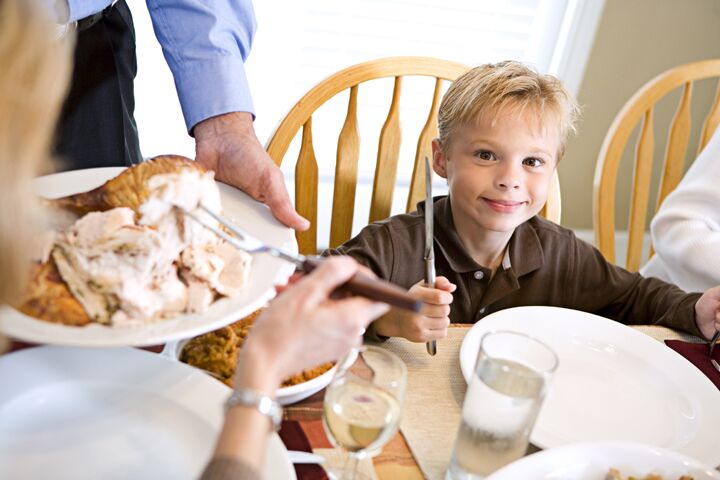
Mind Your Manners
I have an image of the quintessential Italian family dinner, with a huge family—grandparents, aunts, uncles, cousins, parents, children—passing heaping dishes of pasta around a large yet cozy table, with chitchat, smiles and laughter sweetening the air along with the culinary aromas.
Apparently in our world, such a scene is becoming like a fairy tale. Not only are families increasingly scattered and tiny, but regular family meals are becoming a rarity.
In his book Our Culture, What’s Left of It, Theodore Dalrymple describes a growing epidemic within Britain of family meals being replaced by uncivilized hunter-gatherer activity. He laments “the breakdown of the family structure—a breakdown so complete that mothers do not consider it a part of their duty to feed their own children once they have reached the age at which they can forage for themselves in a refrigerator—that promotes modern malnutrition in Britain.”
Children and adults forage and scrounge when hungry, or eat fast food on the go. They snack alone, even stealthily, often in the company of a television.
What a missed opportunity.
Even amid life’s busyness, the daily evening meal should be a welcome coming together among family members. A chance to connect, to share, to listen to each other. An opportunity to strengthen bonds of unity and love. An occasion for each person to see that he is a part of something bigger than himself.
It’s also a chance to teach your children, by example, how to eat properly.
Because our church’s elementary school is here on our headquarters grounds, I am able to have lunch with my daughter and her classmates a couple times a week. I take every chance I can to do so and thoroughly enjoy the experience. But I can say that children eating among themselves—even with an adult present—tend to engage in some pretty unrefined behavior.
They need the reinforcement of good table manners that can occur only when a family eats together regularly.
Moved by these thoughts, I recently pulled a book off my shelf that had accumulated quite a bit of dust. Leafing through its pages, I quickly realized it had been sitting unused far too long.
It is called Amy Vanderbilt’s New Complete Book of Etiquette. It was published in 1952; my copy was last updated in 1963. It’s not even 50 years old—and yet, the rules of social graces it details seem to represent some exotic historical epoch. It helped me realize just how casual and low-minded our culture has become—and how quickly! In America in particular, it seems we pride ourselves in our uncouthness; we exalt the rude and the base.
Herbert W. Armstrong set an altogether different example, especially in the dinners he hosted for the seniors at Ambassador College. He used the occasion to help them recognize that we are royalty and should strive to cultivate the manners of kings.
I found one bit in this book extremely helpful: a list of rules children should be taught on dinner table conduct. Here, summarized from Amy Vanderbilt in 1963, are some things we should not do at the table:
—Sit down to a meal unwashed and uncombed or improperly dressed.
—Tilt our chairs or push them back from the table with all our body weight on them.
—Tuck in a napkin, nor suck our fingers instead of wiping them on a napkin.
—Lounge on the dinner table, including putting our elbows on it or sitting back on our spines. (Apparently it is okay to put elbows—preferably one—on the table between courses.)
—Put more than a manageable mouthful in our mouths at one time.
—Chew with our mouths open or with obvious noise or lip-smacking.
—Speak unnecessarily loudly, or chatter incessantly.
—Behave noisily and conspicuously.
—Burp, belch, sneeze or cough without attempting to turn away from others, and then only behind the cupped hand or a clean handkerchief.
—Scratch, pick the teeth, spit, comb the hair, or tend the nails.
—Pull our finger joints, drum our fingers, or indulge in any similar irritating little habits that set people’s teeth on edge.
—Leave a spoon in a cup, or eat with a knife.
—Interrupt a conversation—except for an important reason and then only after asking permission to speak.
So there you have it. Soon after reviewing these rules with my daughters, one of them corrected my wife on the placement of an errant elbow during a meal. I told her that it was far more rude and inappropriate for a child to correct an adult than it was to misplace an elbow.
But that does bring up an obvious but crucial point: The best way to teach these rules is by our example.
And the only way to do that is by eating together, regularly, as a family.
